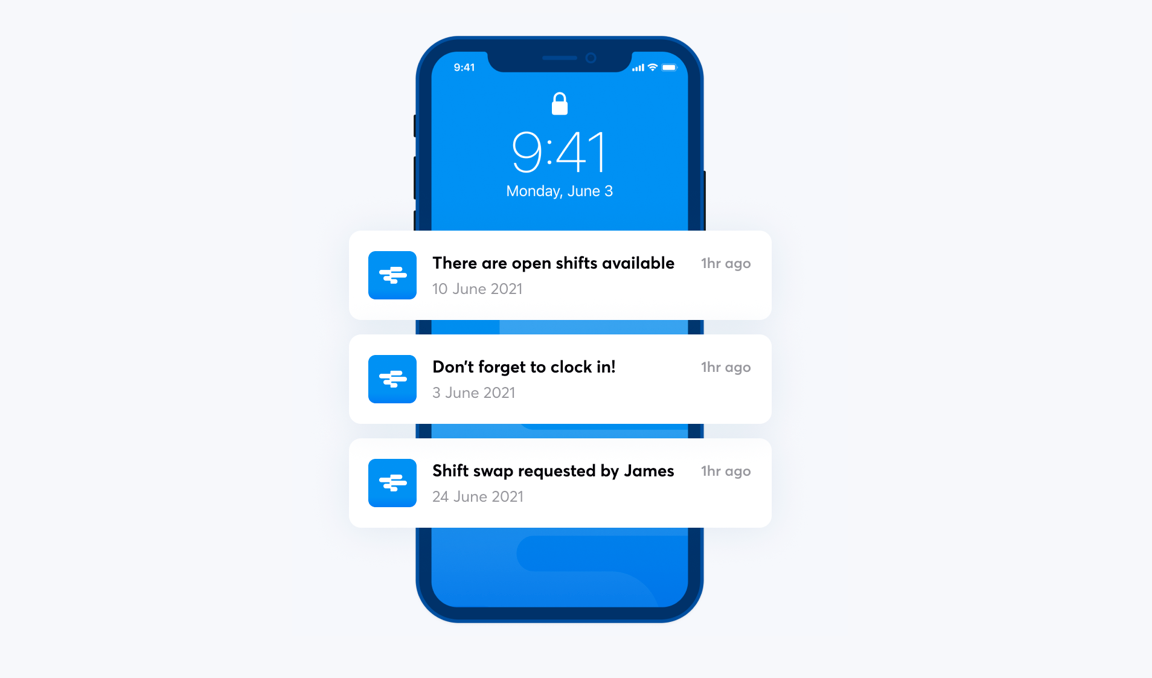With long hours, night shifts, and responsibility for others, staff in the care sector are highly susceptible to stress, and this can lead to all sorts of mental and physical health problems.
But there are things that care home managers and supervisors can do to significantly reduce stress on their employees. Many of which are fairly simple to implement and involve something that impacts your team every single day — the work rota.
1. Talk to your staff before scheduling shifts
2. Be consistent in your employee experience
3. Have a shift pattern that’s good for your staff
4. Allow employees to arrange cover if they’re unable to work
5. Nurture a healthy culture around the use of annual leave
1. Talk to your staff before scheduling shifts
Typically, employees have very little say over the work rota. Aside from sickness and annual leave, staff pretty much work the shifts they’re given.
The reason for this is more likely to be a lack of time, rather than an authoritarian attitude. As much as supervisors might like to create rotas that take their staff’s personal lives into account, few will have the time or resources to do so.
But, when we consider how much of our life we spend at our jobs, having little or no say over when you work can contribute to stress.
The good news is that technology can help both managers and employees in this scenario. If you use scheduling software like RotaCloud to create your rotas then your team can share their availability with you through the app, and this information is visible to you in real time. This means that you can take into account availability as you build your rotas, and no longer need to manually keep track of when your staff can and can’t work. Plus, you’ll create shift schedules that work better for everyone.
Another positive is that people are less likely to ask for changes once you’ve published the rotas — cutting down on admin and giving you more time to focus on running your care business.
2. Be consistent in your employee experience
When it comes to employee experience, consistency is king. And consistency is also really beneficial for our mental health.
Mental health charity Mind regularly talks about the positive impact of routine, and research shows that people are happier and more productive when life has pattern and predictability.
Although you can’t do much to prevent the unexpected in the home lives of your staff, you can create an experience that’s as smooth, reliable and stress-free as possible for them at work.
Here’s how:
- Ensure rotas are available in advance. The more notice your employees have of their upcoming shifts, the more able they are to arrange their lives outside of work. And this is likely to make them feel more in control of their lives and less anxious or stressed. As a rule of thumb, aim to give your team their rota at least seven days ahead of the first shift.
- Publish the staff rota at the same time every week or month. As well as sharing it in plenty of time, send out the rota at a regular time, so your staff know when to expect it and can rely on it. They’ll be able to better plan their personal lives, and won’t have to keep asking when their next shifts are.
- Keep everything visible. The latest rota should be available whenever your team needs to refer to it. Care staff shouldn’t have to call, message, or email you to find out when they’re next working.
- Communicate changes straight away. It’s inevitable that shift changes will occur, but it’s never good for morale when someone shows up at work and discovers that their shift is different to what they were expecting, or that it’s been cancelled entirely.
- Pick a payday (and keep to it). Money’s often a cause of stress, but it’s increasingly a source of major anxiety for many people. It sounds simple, but sticking to the same pay day every week or month will help alleviate some of the worry. Set regular paydays and ensure that wages reach your employees at the same time.

Streamline scheduling & boost communication
✅ Plan and share rotas in minutes, not hours.
✅️ Keep staff in the loop with automatic shift updates.
✅ Free mobile app lets staff check their rota whenever they like.
3. Have a shift pattern that’s good for your staff
You know your care business best, and who you need where and when. But it’s worth taking extra care when deciding which shift patterns to adopt at your care business, as you need to consider the impact they’ll have on your team as well as the level of cover they’ll provide.
Need an on-call schedule or 24-hour cover? A 3-shift pattern (where employees take turns working mornings, afternoons, or night shifts) is fairer than having the same people always working the same unsociable hours.
If you need staff to work nights, the “DuPont” shift pattern (where employees have seven days off in a row, after working alternate day/night shifts for 21 days) could work, and gives your care staff more time with their friends and family — which helps to reduce stress and increase happiness.
Familiarise yourself with different shift patterns so that you can assess their effect on staff engagement, productivity and burnout. There isn’t a ‘one size fits all’ when it comes to rotas, and it’s beneficial to talk to your team before deciding which patterns work best for your care business.
4. Allow employees to arrange cover if they’re unable to work
If someone’s struggling with their mental health then they may feel unable to cope with work.
Few people would force someone they know is feeling overwhelmed to come in, but it can be difficult when it’s your responsibility to find cover. Which can be inevitable when you’re the manager.
One possible way around this is to use scheduling software that allows your staff to arrange their own cover or organise swap shifts with other members of the team.
Through a people management platform like RotaCloud, staff can propose swaps with eligible (those not already working the shift and able to do the job) team members via the mobile app. They then send the proposed swap to their manager who can approve or deny it with one click.
This saves you and your supervisors the time and headache of filling unexpected gaps in the rota, and simultaneously gives staff an element of control over their work. It may also eliminate feelings of guilt and anxiety that staff sometimes feel when calling in sick or admitting they’re not up to working.

Give your staff the tools they need
RotaCloud lets staff arrange cover and shift swaps via their mobile phones — all you have to do is click 'Approve' or 'Deny'.
5. Nurture a healthy culture around the use of annual leave
Studies show staff who don’t make full use of their entitled leave are more likely to become ill, exhibit signs of stress, and have lower productivity levels than those who do.
As part of creating a healthy employee experience, make sure that you regularly remind your care team to book and take their annual leave.
You should:
- Set and communicate a system for booking holidays. Whether they fill in a form, email a supervisor, or request it through an app, all your employees should have a clear and easy process for requesting time off.
- Encourage it! Regularly remind your care team about the importance of taking breaks from work, and put provisions in place (advanced shift scheduling, for example) to avoid understaffing and the feelings of guilt that can occur around taking annual leave.
- Keep allowances visible. Everyone should know how much leave they’re allocated, and how much they have left to take. Ensure that these records are visible and accessible to your staff — not just your managers — so that they can check them without having to message you or a supervisor.
- Be quick to deal with leave requests. As much as you might want to, it’s not always feasible to grant every leave request that comes in. But you can promise to process them promptly. In doing this, your care team can make plans for life outside of work, and won’t have to play the ‘waiting game’ — something that can really spike anxiety.
Also remember to consider those employees who accrue their holiday over time, rather than having it allocated in a block. If you use scheduling software for planning staff rotas and managing leave then it will automatically record your employees’ holiday allowance based on the shifts they work. This makes it easier for everyone, as you’re saved the time and hassle of manually inputting shift data, and your care team can check their leave allowance whenever they like.
Wrap-up
With early starts, late finishes, night shifts, and unsociable hours, stress can feel somewhat inevitable in the care sector.
But there are things you can do to actively reduce stress and improve the wellbeing of your care team.
If you create a culture and environment to help empower your employees — by giving them a degree of control and a sense of ownership over their shifts, and an always accessible and visible rota (that they can access ahead of time) — then they’re less likely to feel as though their lives are completely ruled by uncompromising factors. This, in turn, should reduce feelings of stress.
Making changes like these will not only improve the lives of your care staff, because you — as their manager — will also reap rewards. If you encourage your team to let you know their availability in advance, and to take leave regularly and book it early, then they’re less likely to request last-minute shift changes, become unwell or burn out, or show up late. All of which reduces stress for you, and improves how your care business runs.





